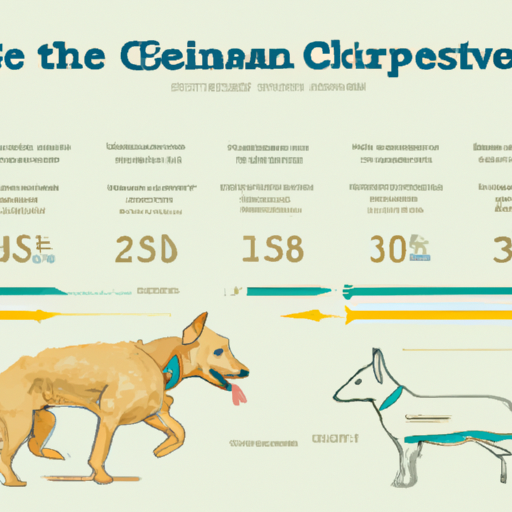As a dog owner, you’ve probably heard the old adage: “one year for a human is like seven years for a dog.” This saying has been around for a long time, but is it really the best way to understand your pet’s age?
Table of Contents
- The Traditional Seven-Year Rule
- A More Accurate Measure: The American Veterinary Medical Association’s Approach
- Factors Influencing a Dog’s Lifespan
- Comparing Dog and Human Lifespans
- FAQs
Key Takeaways
- The seven-year rule is a simplification and not entirely accurate.
- A dog’s age relative to humans depends on its size, breed, and overall health.
- The American Veterinary Medical Association offers a more nuanced approach to calculating dog years.
The Traditional Seven-Year Rule
The seven-year rule is a well-known method for calculating a dog’s age in human years. According to this rule, each year a dog lives is equivalent to seven human years. However, this rule is oversimplified and doesn’t take into account the unique lifespan and developmental stages of different dog breeds. In reality, dogs age faster than humans in their early years and slower in their later years.
For a more accurate calculation of your dog’s age, you can visit websites like Dog Years Calculator.
A More Accurate Measure: The American Veterinary Medical Association’s Approach
The American Veterinary Medical Association (AVMA) provides a more nuanced approach to converting dog years to human years. According to the AVMA, the first year of a medium-sized dog’s life is approximately 15 human years. The second year of life is around nine human years, and after that, each additional year is about five human years.
This method is more accurate because it takes into account that dogs mature more quickly than humans in their early years. However, it’s still a generalization. The exact conversion can vary depending on factors like the dog’s size and breed.
Factors Influencing a Dog’s Lifespan
There’s a wide range of factors that can influence a dog’s lifespan and how it translates to human years. Some of the key factors include:
- Size: Generally, smaller dogs live longer than larger ones. This can affect how their age translates to human years.
- Breed: Some breeds have longer lifespans than others. For instance, a Chihuahua can live up to 17 years, while a Great Dane may only live to be around 8 years old.
- Health: Dogs that are well-cared for, with a balanced diet and regular exercise, are likely to live longer.
For more information on these factors and how they can affect your dog’s lifespan, check out this article on Factors Influencing a Dog’s Lifespan.
Comparing Dog and Human Lifespans
It’s important to note that comparing dog and human lifespans is not an exact science. There’s a huge diversity in dog breeds, sizes, and health statuses, and all of these can affect a dog’s lifespan.
Here’s a general comparison based on the AVMA’s approach:
| Dog’s Age | Equivalent Human Age |
|---|---|
| 1 year | 15 years |
| 2 years | 24 years |
| 3 years | 29 years |
| 5 years | 39 years |
| 10 years | 64 years |
For more insights into how to more accurately calculate your dog’s age in human years, you might find this article on Dog Age vs Human Age helpful.
FAQs
Q: Why do smaller dogs live longer?
A: There are many theories, but one common explanation is that larger dogs grow faster, which might lead to more health issues.
Q: How can I help my dog live longer?
A: A balanced diet, regular exercise, and regular check-ups with the vet can all contribute to a longer, healthier life for your dog.
Q: What’s the oldest recorded age for a dog?
A: The oldest recorded age for a dog is 29.5 years. This record was set by an Australian Cattle Dog named Bluey.
Understanding your dog’s age in human years can help you better care for their needs at each stage of life. Remember, the seven-year rule is a simplification. For a more accurate estimate, consider your pet’s size, breed, and health.
For more knowledge on how to care for your pet at different stages of their life, you can check out this guide on Dog Care by Age.



